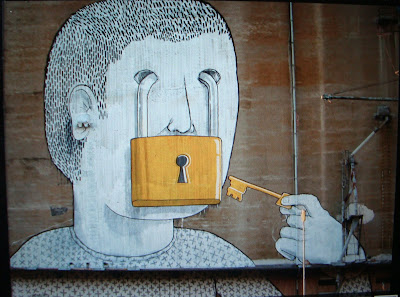 Here is a sentence from F.L. Lucas's book The Decline and Fall of the Romantic Ideal (see previous post) that throws light on Goethe's "Romantic" tendencies: "The Odyssey seems to me ... a standing proof of the superiority of work that, with all its Romantic dreaming, yet maintains to the end Classic sanity and self-control." Lucas might seem to be talking about Goethe here, whom he quotes on occasion, mostly with that misleading judgment of Goethe's concerning the "diseased" nature of Romantic poetry.
Here is a sentence from F.L. Lucas's book The Decline and Fall of the Romantic Ideal (see previous post) that throws light on Goethe's "Romantic" tendencies: "The Odyssey seems to me ... a standing proof of the superiority of work that, with all its Romantic dreaming, yet maintains to the end Classic sanity and self-control." Lucas might seem to be talking about Goethe here, whom he quotes on occasion, mostly with that misleading judgment of Goethe's concerning the "diseased" nature of Romantic poetry.The second chapter of Lucas's book concerns the "pasts" of Romantic literature, which he defines as a "dream-picture of life; providing sustenance and fulfillment for impulses cramped by society or life." This is the most prosaic thing Lucas writes in what is otherwise a fascinating excursus into ancient and modern literatures. In this chapter he begins with the Romantic tendencies of the Greeks, for instance, the imaginative nature of Greek mythology, which has "turned our heavens to a constellated tapestry of the stories of Orion and Andromeda and the rest." Indeed, as he writes, "few things are more romantic than 'classical' mythology."
At the same time, the Greeks did not fall prey to the excesses of imagination exhibited by Goethe's Jena contemporaries. As Lucas writes, the "Romantic" elements seen in classical writers, such as the golden bough by which Aneas gains entrance to the underworld in Virgil's Aeneid, "surprise, like strange plants sown by some wandering bird or wind in fields far from home." The ancients always had a guardian standing at the portals of the dream world to turn back shapes too fantastic. Of interest to me was the objections of Longinus to the fantastic elements of the Odyssey, which he thought made Homer less great. His objection to the shutting of the winds in a bag, or Circe's turning men into swine show, according to Lucas, "how over-wakeful and over-sober, here as always, is the Classic sense of fact!"
He goes on to talk about the Hellenistic era, in which the countryside of Theocritus looks forward to that of Wordsworth, and of the late Greek romances (The Golden Ass), in which the classical sense of reality and grasp of character have totally faded. The latter also characterize much literature of the Middle Ages, in which "Romance blooms everywhere, like the mistletoe in the orchards of Normandy." It was in the Middle Ages, before the modern attitude to the world was born, that imagination really ran riot. "Men believed what they read, and what they believed, they embroidered."
 Lucas's exemplary case is Aucassin and Nicolette. Like Homer's Achilles, Aucassin will not go to battle because the woman he loves has been taken away. "But Homer hardly tells us how Briseis looked, or how Achilles felt for her. She remains in his hands a dazzling shadow -- 'fair cheeked,' 'like golden Aphrodite.' ... How vividly, by contrast, Nicolette looks out of her prison window in Beaucaire, or clambers down from it by her rope of sheets and towels!" Reading Lucas reminds me of why I first studied literature.
Lucas's exemplary case is Aucassin and Nicolette. Like Homer's Achilles, Aucassin will not go to battle because the woman he loves has been taken away. "But Homer hardly tells us how Briseis looked, or how Achilles felt for her. She remains in his hands a dazzling shadow -- 'fair cheeked,' 'like golden Aphrodite.' ... How vividly, by contrast, Nicolette looks out of her prison window in Beaucaire, or clambers down from it by her rope of sheets and towels!" Reading Lucas reminds me of why I first studied literature.And, finally, another insight into Goethe, as Lucas writes of the reason for the "lasting triumph" of Greek literature: its balance of classicism, realism, and romanticism. Sappho writes, he says, with a heart of madness, but her hand does not shake. I think that describes Goethe, after his encounter with Italy, but this combination is lacking in 18th-century neoclassicism.
I had not encountered F.L. Lucas before a week ago, but he has a breadth as impressive as Curtius or Auerbach. And what an impressive oeuvre, both critical and literary.







